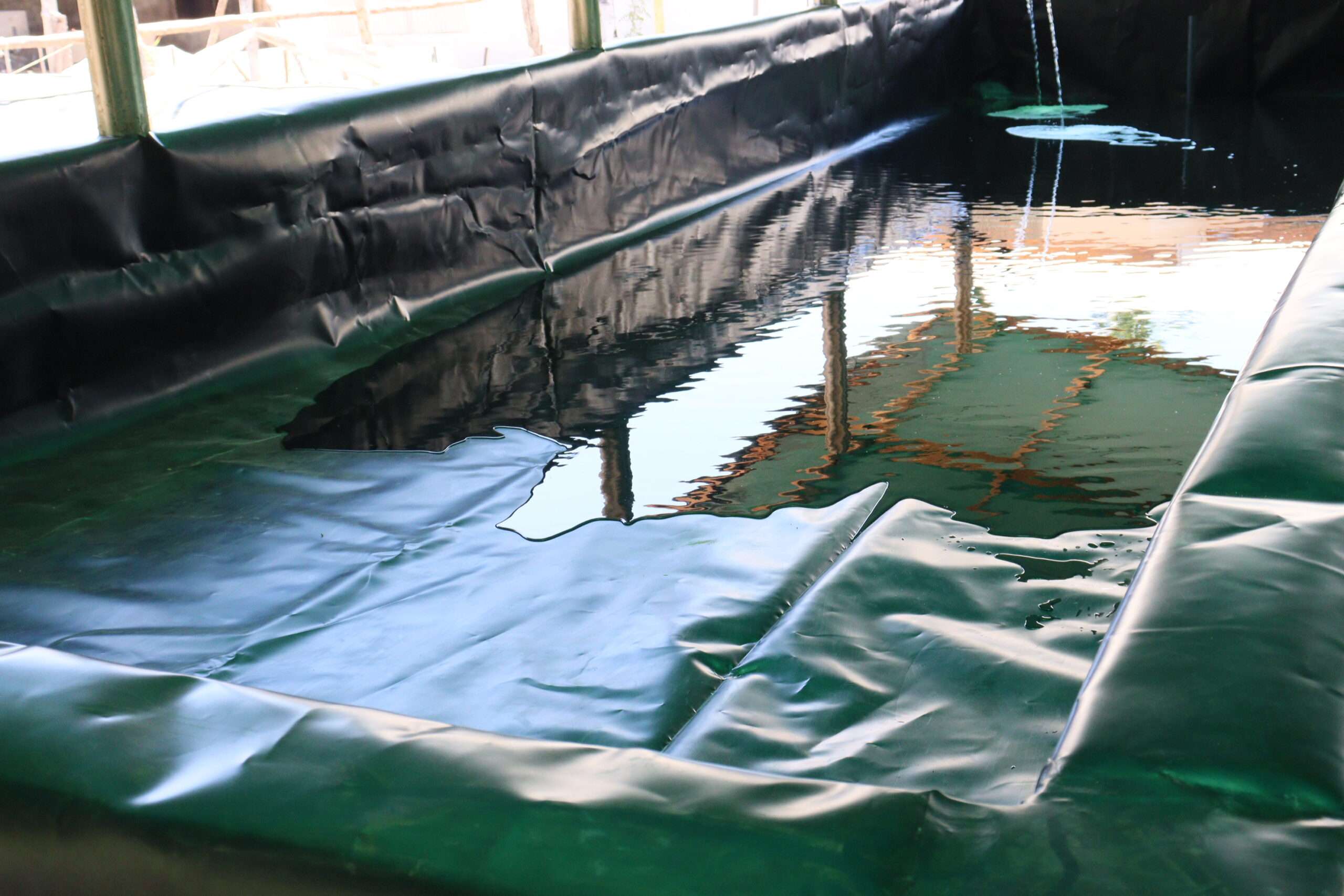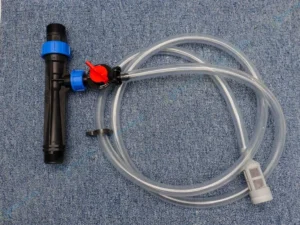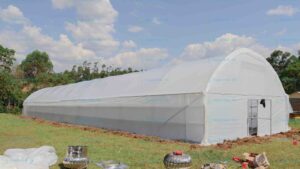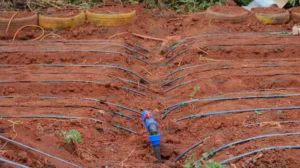Buy Dam Liners for Sale at Aqua Hub LTD range between KES 210 to KES 450 for every square meter of quality HDPE Liner material.
This article covers all the information about dam liners for sale in Kenya including specifications, prices, cost, uses and supplier.
Call 0790719020
Dam Liners for Sale in Kenya
We import quality Dam Liners for sale sourced from best manufacturers in China, and India. Our dam liners are popular in Kenya due to their longevity and effectiveness in handling water needs. Why spend much time and effort while you can just buy your quality dam liner from Aqua Hub Kenya at the comfort of your vicinity? We engage with our clients to ensure they order the best dam liner for their use and get it through reliable delivery means.
Buying from us means you also get professional installation and follow up for help in case of any issues or repairs.
Call 0790719020
Specifications of Dam Liners for Sale
A quality dam liner should meet the following specs:
- Material: HDPE, LDPE, or PVC
- Thickness: Ranges from 0.3mm to 1mm
- Width: Usually 8m (Customizable)
- Length: Customized to the size of the dam
- Color: Mostly black (UV resistant), but other colors are available
- UV Resistance: To withstand Kenyan sunlight
6 Properties of Our Dam Liners for Sale
- High Strength – Our Dam Liner are manufactured with tensile strength to resist mechanical damage.
- Density – HDPE material liner is heavy for it to resist damage from high weight and pressure from stored water.
- Soft/smooth – soft texture enhances the waterproof nature and prevents abrasion.
- Black Color – black color of the dam liner is ideal for heat absorption to enhance optimal water temperature especially for fish farming.
- Waterproof nature – does not allow seepage of water because it of it’s impermeable design.
- UV Resin or Additive – in manufacturing process, the raw material is reinforced with UV resistant chemicals. This is to improve dam liner durability and prevent the effect of UV rays.
How Much are Dam Liners for Sale in Kenya
The price of Dam Liners in Kenya varies depending on the quality and thickness level (differential factor). Dam Liners are measured and sold in square meters. The cost of dam liners is as follows:
- KES 200 for 0.5 mm
- KES 310 for 0.75 mm
- KES 420 for 1 mm
What Affects the Cost of Dam Liners for Sale in Kenya?
When buying dam liners in Kenya, you’ll notice prices vary. Here’s why:
a) Thickness
Measured in millimeters (mm) or microns, thicker liners cost more but last longer. Common thickness include:
- 0.3mm (300 microns) – short-term use
- 0.5mm (500 microns) – medium durability
- 1mm (1000 microns) – long-term use or harsh environments
b) Size
Liners are sold per square meter. The larger your dam, the higher the total cost.
c) Material Type
HDPE liners are more expensive than LDPE or PVC due to their strength and durability.
d) Installation and Transport
Some suppliers include installation costs, others don’t. Distance from the supplier also affects transport fees.
Types of Dam Liners for Sale | Dam Liners Sold in Kenya
There are different types of dam liners available in the Kenyan market. The most popular ones include:
a) HDPE (High-Density Polyethylene) Liners
- Strong and durable
- Resistant to UV rays and chemicals
- Common in large-scale water projects and fish farming
b) LDPE (Low-Density Polyethylene) Liners
- More flexible than HDPE
- Suitable for small to medium water storage
- Slightly cheaper, but less durable
c) PVC (Polyvinyl Chloride) Liners
- Very flexible and easy to install
- Best for temporary water storage
- Not as durable as HDPE
d) Geotextile Reinforced Liners
- Comes with a layer of geotextile fabric
- Ideal for rocky or sharp surfaces
- Offers extra protection against punctures
In Kenya, HDPE is the most common dam liner due to its durability and long lifespan.
How Do they Function? Dam Liners for Sale
High volumes of water can be collected in ponds, dams and concrete sections by using dam liners to restrict underground losses.
Dam Liners are thick hard and waterproof, making them reliable to retain water for as long as you need to until use.
How to Get the Best Dam Liner for Your Needs
To Buy the best dam liner, you should fully understand your needs. These questions are important when determining the right dam liner to use:
- What is the size of your dam or pond?
- What type of soil do you have?
- What is the intended use – irrigation, fish farming, or water storage?
- What is your budget?
For instance, soil with predominant rocks may need a thicker liner to prevent punctures. A fishpond might require a food-grade liner to ensure the health of your fish.
How to Install Dam Liners
Installing a dam liner correctly is essential for long-term performance. Follow these steps:
1: Site Preparation
- Remove sharp objects, rocks, or roots
- Level and smoothen base
- Create gentle slopes on the sides
2: Measure and Cut the Liner
- Measure the dam’s width, depth, and length
- Add extra length for anchoring
- Cut the liner accordingly
3: Place the Liner
- Unroll the liner carefully
- Lay it across the dam, ensuring it covers all areas
- Avoid dragging it to prevent tears
4: Anchor the Edges
- Dig a trench (about 30cm deep) around the dam edges
- Place liner edges inside and backfill with soil
5: Fill with Water
- Slowly fill the dam to test the liner
- Monitor for leaks or air pockets
Where to Get Affordable Dam Liners for Sale in Kenya
Buy Dam Liners from Aqua Hub LTD. They have best dam liners, provide faster feedback, support installation and consultation at less cost.
Call 0790719020
Our Installation Projects are handled with our dedicated team to ensure you get reliable reinforced water catchment.
Challenges with Dam Liners for Sale and How to Solve Them
Despite their benefits, dam liners can come with challenges:
a) Punctures or Tears
- Cause: Sharp stones or poor installation
- Solution: Use geotextile underlay and ensure proper site preparation
b) Damage
- Cause: Prolonged sun exposure
- Solution: Choose UV-resistant liners (HDPE) and cover exposed parts with soil
c) Leakage
- Cause: Punctures, poor joining or wrong measurements
- Solution: Hire professional technician or seek guidance from the supplier
Common Uses of Dam Liners in Kenya
Dam liners are used in a variety of ways across Kenya:
- Irrigation Farming – For storing water to enable crop production during dry seasons
- Fish Farming (Aquaculture) – To line or reinforce water levels in fishponds
- Livestock Watering – In pastoralist or dry areas to collect water for animal drinking.
- Rainwater Harvesting – Lining reservoirs and tanks to boost rain water storage for consumption when there is shortages.
- Industrial Use – In chemical and waste containment.
- Construction – As liners for making the bases of buildings strong and waterproof.
The demand continues to grow as climate change makes water conservation more critical than ever.





